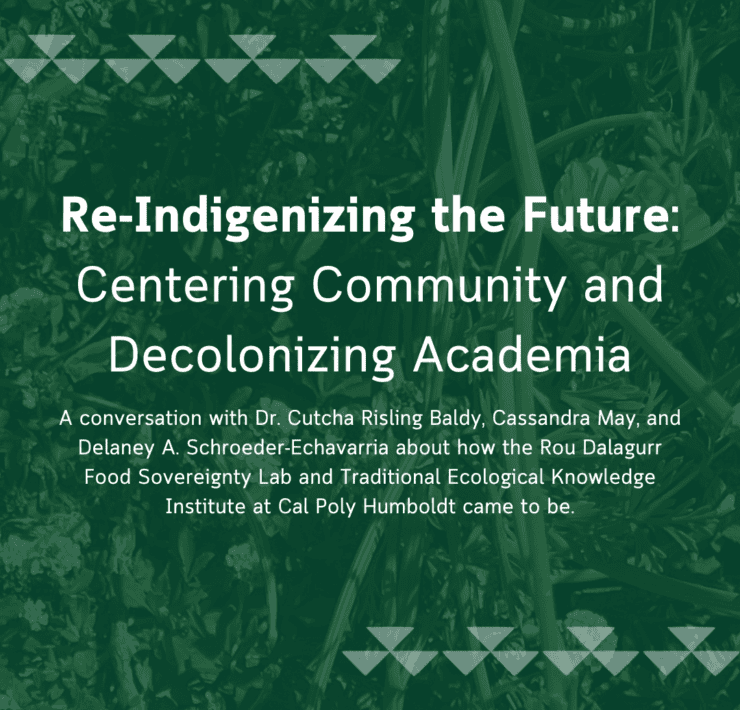WIC Education Programs on California Rancherias and Indian Communities, PART TWO: Doing It Ourselves

WIC Education Programs on California Rancherias and Indian Communities
A Three Part Series
By Samuel L. White Swan-Perkins
Part Two: Doing it Ourselves
As is evidenced in the first article in this series, California Native Americans have been proven to be motivated to fight the epidemic of Diabetes that is so prevalent in Indian Country.
The devastation that was wreaked upon the California Natives during the Gold Rush is still palpable in small towns across the North State. Today, WIC and ITOs across Indian Country are attempting to have a positive impact on tribal nations. According to the most recent survey of the Food Distribution Programs on Indian Reservations, “The Food Distribution Program on Indian Reservations (FDPIR) provides supplemental foods to low-income households living on or near Indian reservations… Congress was concerned that this need may not be adequately addressed by the Food Stamp Program.. The primary concern was that the remote location of many reservations may make it difficult for many American Indians to participate in the Food Stamp Program… Thus, FDPIR represents an alternative to the Food Stamp Program for residents of Indian reservations.”1
One small, anonymous Nation in Northern California saw positive results when addressing it’s own Diabetes epidemic. Attendees at educational meetings on Diabetes adhered to Standards of Care outlined by the tribes’ Registered Dietitian. By setting and adhering to several goals over the course of two years, tribal members witnessed positive changes in their Diabetic members. Even the youngest tribal members were positively affected by the plan; Elders reported being chastised by their grandchildren, having been caught, hand in the cookie jar in the early morning hours. In another example of the success of WIC educational programs, of Native American youth who participated in FDPIR programs in California, nearly 55% of AIAN compared to 51% of non-Latino Whites (Whites) consumed five or more servings of fruits and/or vegetables daily. For teens, nearly 35% of AIAN consumed five or more servings of fruits and/or vegetables daily compared to nearly 28% of non-Latino Whites (Whites). 1
The education that is taking place vis a vis the tailgate distribution programs is making a positive impact. Prior to this, most tailgate programs relied on cookbooks for nutrition and cooking information. Printouts and flyers with culturally appropriate icons and information are provided in each distribution. Afua Khumalo, Director of Community Nutrition Services in Banning, Ca shares, “Our FDPIR program is an amazing resource for the program participants to gain access to healthful foods and numerous free nutrition education opportunities. Participants are able to meet with the Registered Dietitian for their health concerns. They receive hands on learning experiences on how to prepare healthful meals from food demonstrations and a variety of nutrition related handouts on different topics. The program also offers several referrals to different free health programs and events that promote good health to those who choose to participate.”
But what about the other popular education endeavors? The research conducted indicated that there is much work to do. One anonymous informant shared that problems still exist during the training sessions at WIC offices, specifically in the lactation training classes they attended. Another source was chastised by WIC representatives for low milk production. She shared that after the birth of her first child, her weight went up and for a time, she struggled with gestational diabetes. After following the advice of WIC officials to maintain a diet according to their guidelines, WIC representatives became pushy, blaming the clients for her poor production. “I followed their advice, began exercising and doing everything I could possibly do as a young, first time mother, to increase production. In the end, we resorted to bottle feeding. The whole experience left me feeling bad; there were goals that I was expected to keep, production wise. If I missed those goals, the family paid the price (in less commodities). We began to dread going to the WIC office, a place that we do not like to visit. The stigma that the WIC workers (often members of the same tribe) began to follow me into the community. It got to where we would rather just stay home.” 2
It’s no secret that Native Americans are leery of Western medicine and its practices and as such, WIC has taken steps to alleviate concerns. According to a statement by WIC, “USDA Food and Nutrition Service is dedicated to serving the needs of Native Americans, and efforts to support tribal communities are not limited to the WIC program. USDA’s Office of Tribal Relations (OTR) serves as a single point of contact for Tribal issues and works to ensure that relevant programs and policies are efficient…accessible, and developed in consultation with the American Indians and Alaska Native constituents…” In order to further address these concerns, WIC formed a group in 2002. According to WIC, “The Work Group has been working to incorporate more traditional food options into the FDPIR food package… Traditionally harvested wood-parched wild rice will be available October 2016 and frozen wild salmon will be available between October and December 2016.” 4 So key, is this link to the past, the Center for Disease Control formulated a board to help promote the cause of 17 tribal nations, all striving to return to their traditional foodways. From 2008-2014, the Traditional Food Project program helped, “Encourage local health practices and policies to increase availability of and access to local, traditional foods and physical activity.” 5
This will come as a welcome change from the usually tinned or packaged foods as provided by the USDA to the FDPIRs and onto the ITOs. As the old adage holds, variety is the spice of life; one of the primary complaints around the food distribution program is the lack of variety in the foods that are offered; many of which have no basis in traditional cultures of California Native Americans.
In our last installment, we will recap the history behind the FDPIR system, its effect on California Native American communities and an exciting update as to new changes to the list of foods that are currently available through the USDA.
Citations:
1 EVALUATION OF THE FOOD DISTRIBUTION PROGRAM ON INDIAN RESERVATIONS VOLUME I: FINAL REPORT June 1990
2 Anonymous Interview conducted 06/15/16
3 Correspondence from WIC dated 09/28/16
4 Correspondence from WIC dated 09/28/16
5 http://www.cdc.gov/diabetes/ndwp/traditional-foods/index.html








